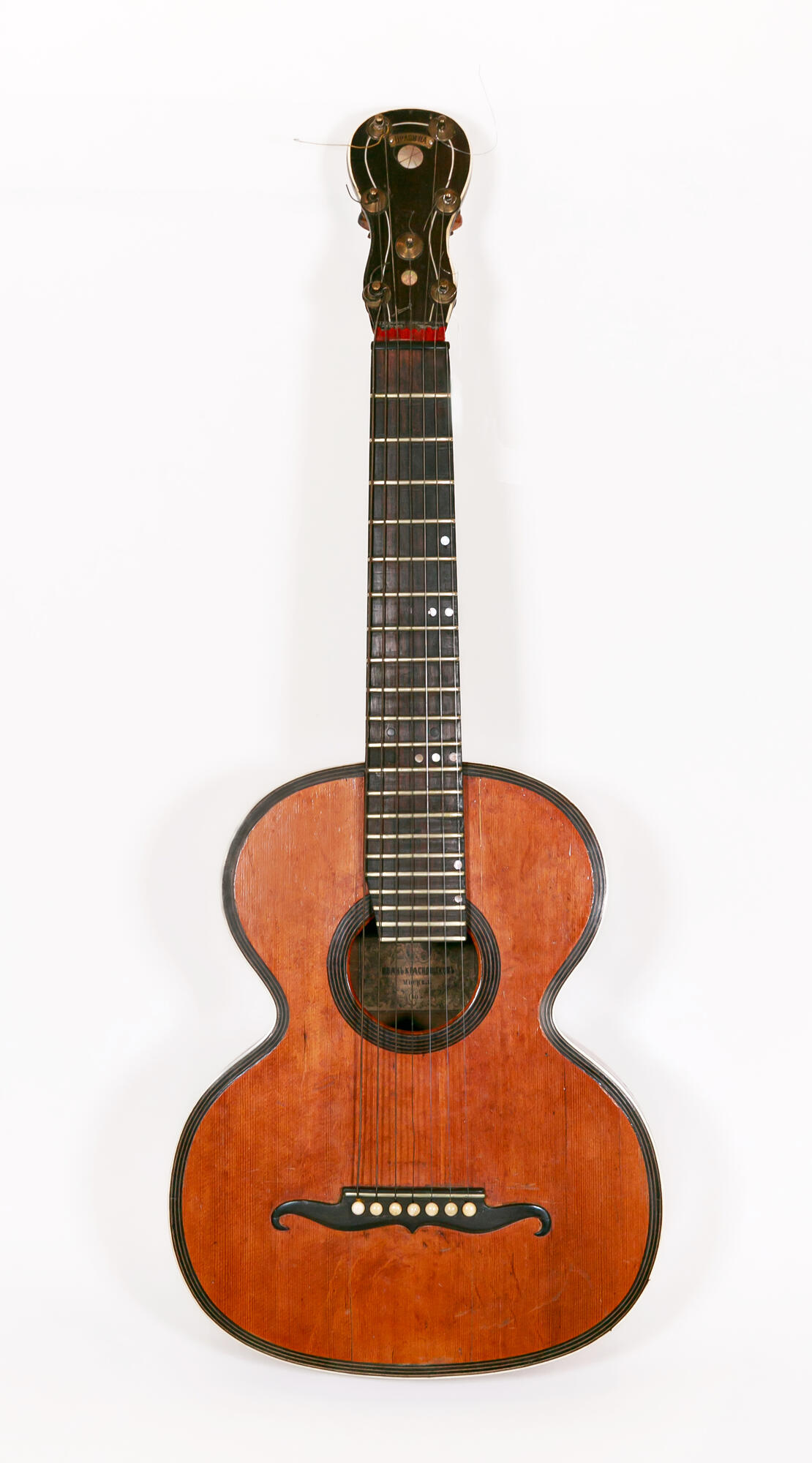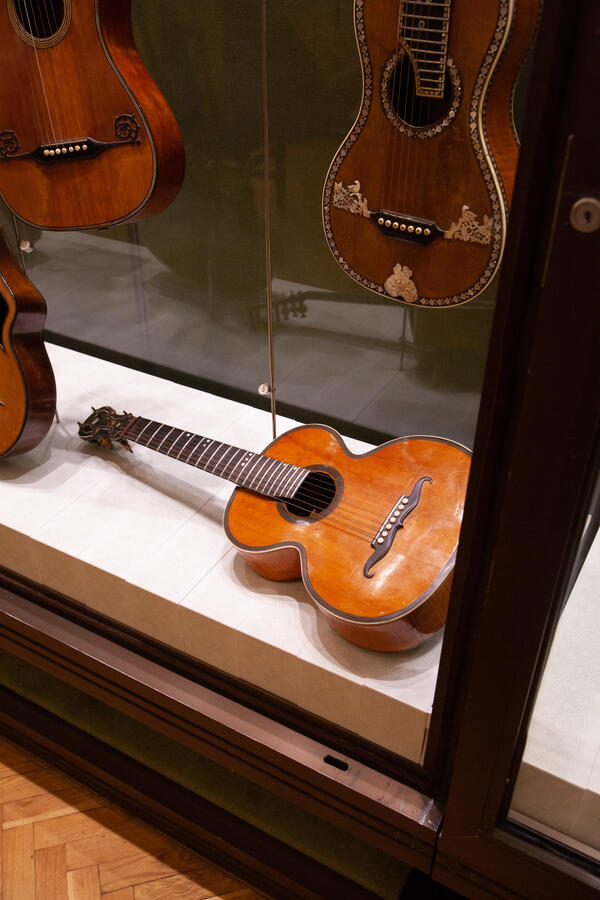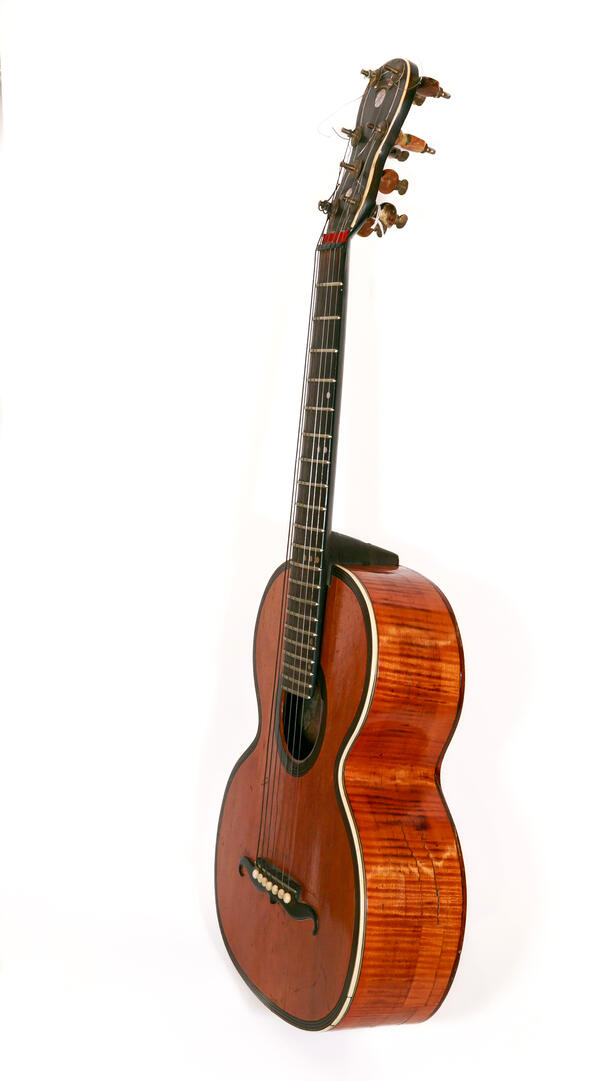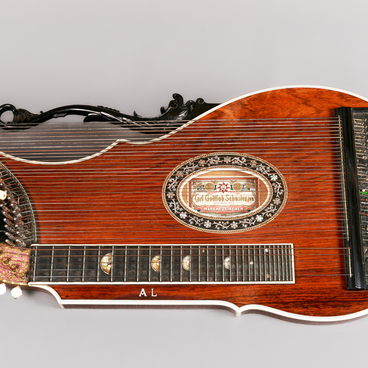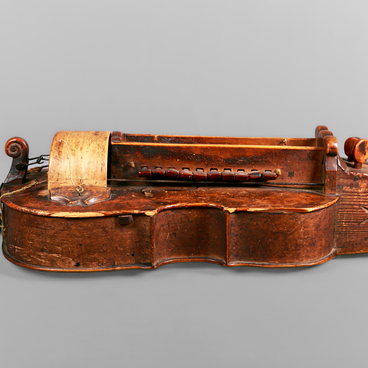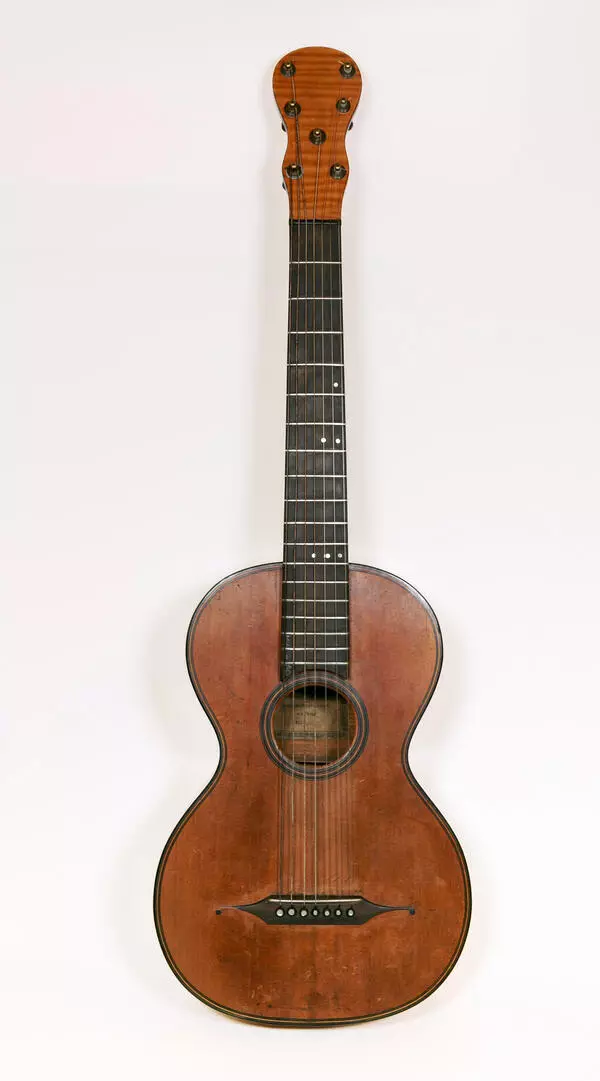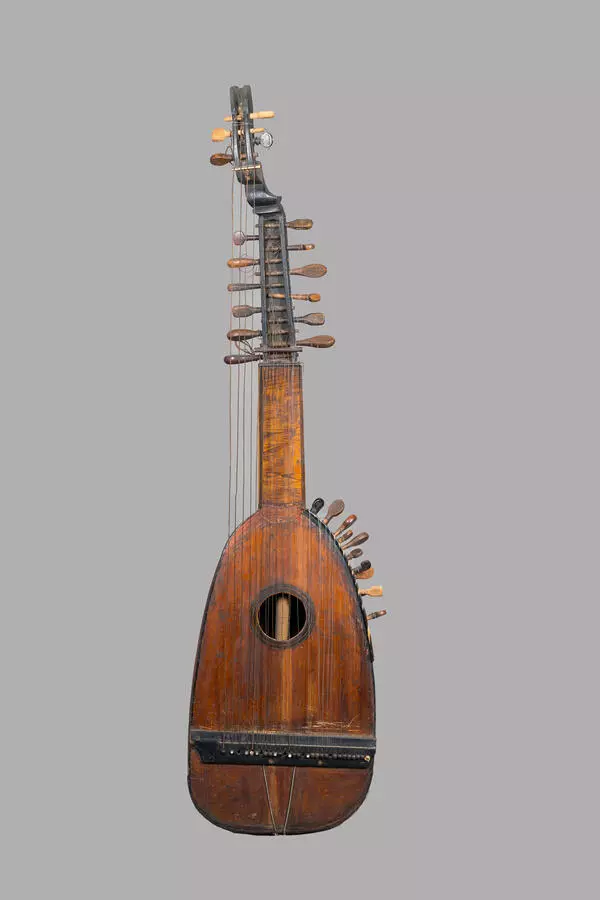Ivan Rom-Lebedev, was a famous Soviet actor, playwright, and guitarist, and the founder of the world’s first all-Romani Romen Theater in Moscow. He often visited the Glinka Museum of Musical Culture, nowadays known as the Russian National Museum of Music.
Lebedev was mostly interested in the guitar of the famous “gypsy singer Tanya.” She was the one who sang for Alexander Pushkin the day before his wedding. Currently, another legendary instrument is displayed alongside Tanya’s guitar.
This instrument used to belong to Ivan Rom-Lebedev himself. The seven-string guitar was created by Ivan Krasnoshchyokov — one of the best guitar builders in 19th century Russia.
The instrument was donated to the museum by Nina Rafanskaya, Lebedev’s wife, in 1999. On the front of the pegbox, there is a metal plate with the engraving “N.A. Orlov.”
The encyclopedia by Mikhail Yablokov “Classical Guitar in Russia and the USSR” contains a summary of information about Nikolay Orlov — a Moscow-based guitarist, collector, and craftsman who specialized in restoring old instruments. It also refers to an article from the “Soviet Russia” newspaper of May 28, 1967.
The article read,
Lebedev was mostly interested in the guitar of the famous “gypsy singer Tanya.” She was the one who sang for Alexander Pushkin the day before his wedding. Currently, another legendary instrument is displayed alongside Tanya’s guitar.
This instrument used to belong to Ivan Rom-Lebedev himself. The seven-string guitar was created by Ivan Krasnoshchyokov — one of the best guitar builders in 19th century Russia.
The instrument was donated to the museum by Nina Rafanskaya, Lebedev’s wife, in 1999. On the front of the pegbox, there is a metal plate with the engraving “N.A. Orlov.”
The encyclopedia by Mikhail Yablokov “Classical Guitar in Russia and the USSR” contains a summary of information about Nikolay Orlov — a Moscow-based guitarist, collector, and craftsman who specialized in restoring old instruments. It also refers to an article from the “Soviet Russia” newspaper of May 28, 1967.
The article read,
